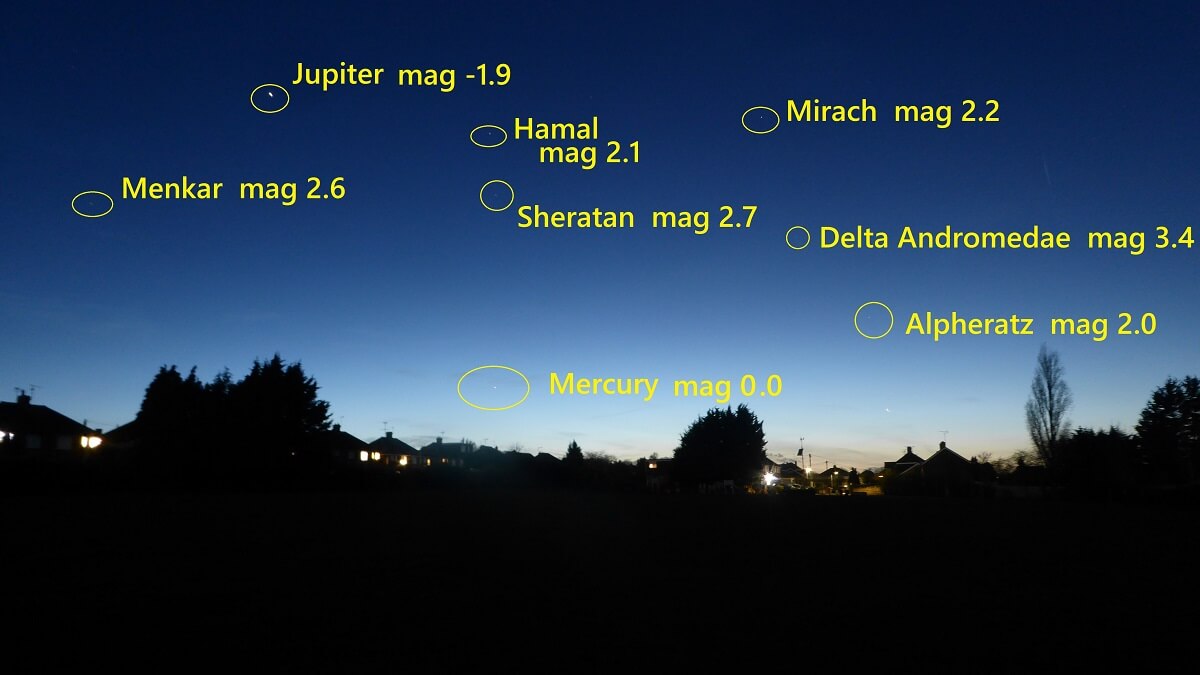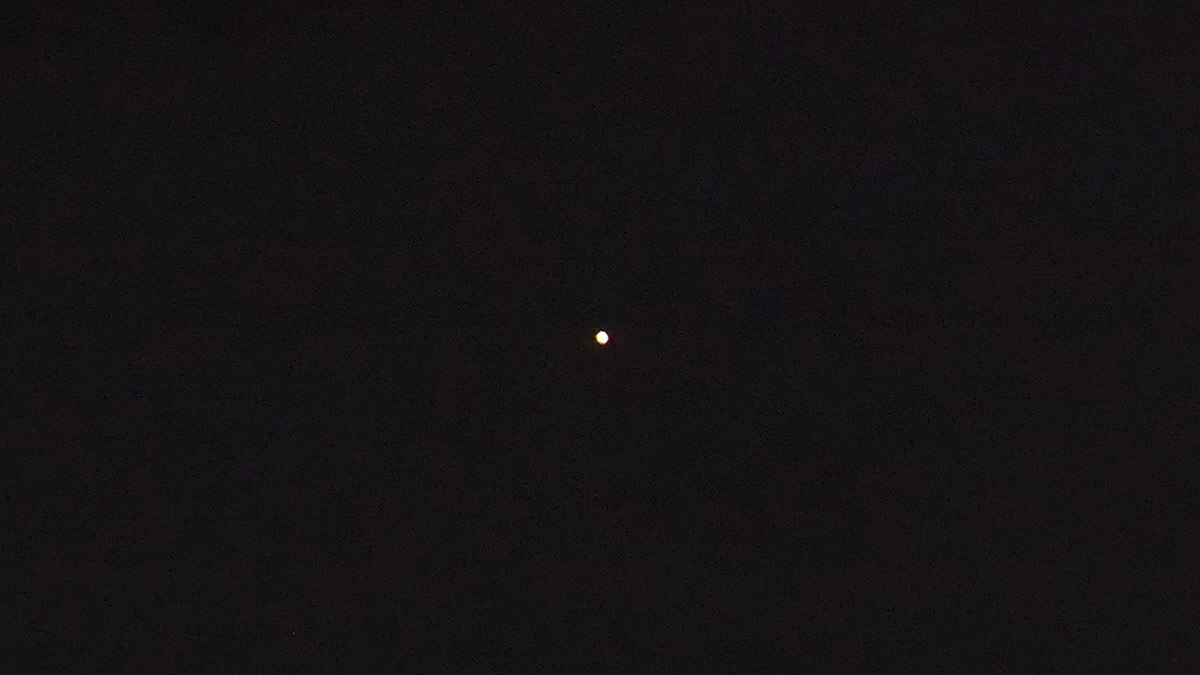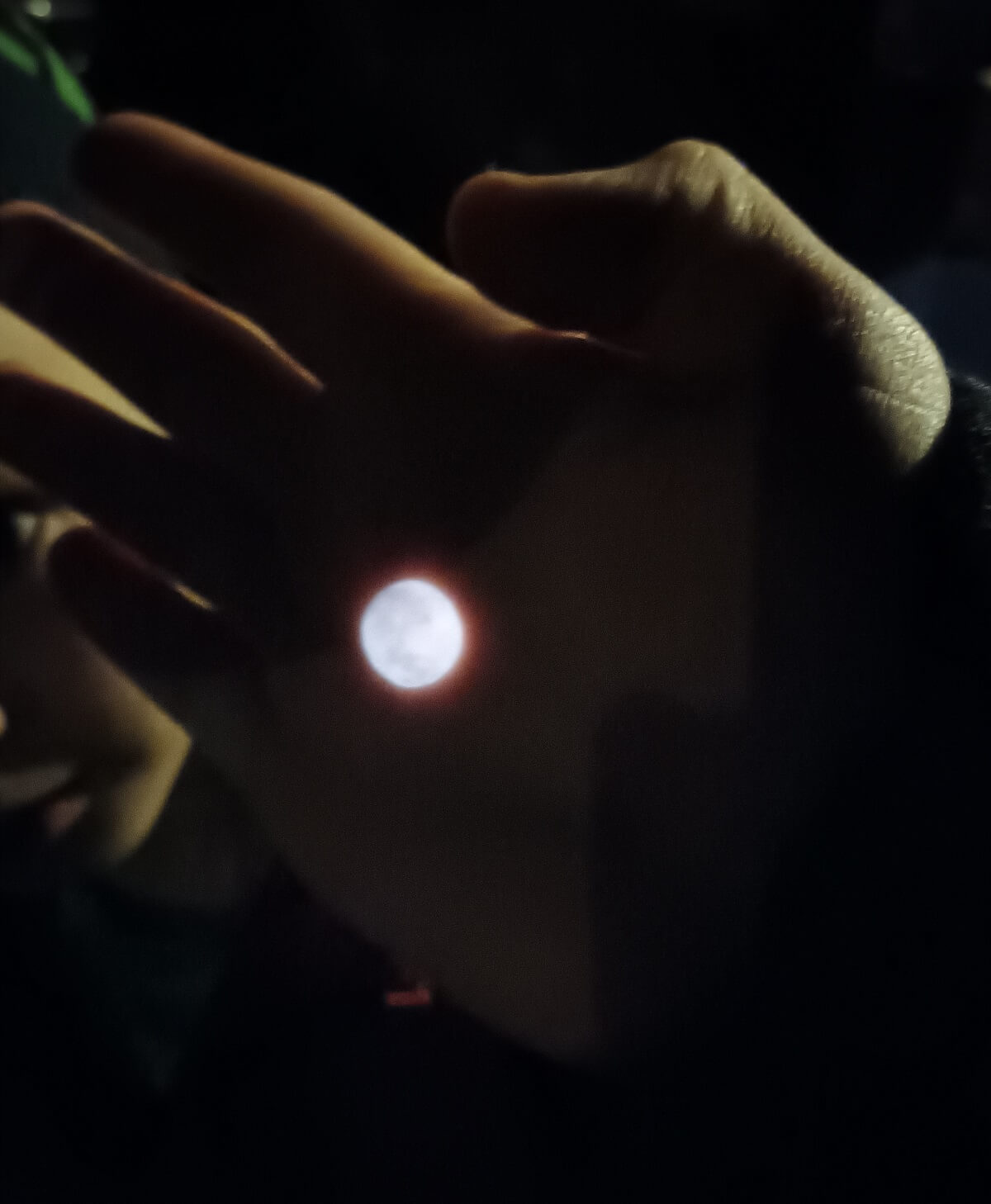TRAC Monthly Report: March 2024
- Category: Monthly Reports
- Author: JM
- Published: 01 Apr 2024
- Last updated: 02 Apr 2024
Mercury
Team TRAC Assembles
In the early twilight on 24 Mar 2024, like an elite paramilitary unit, the TRAC team embarked on its toughest mission to date. Equipped with binoculars, torches, laptops, tripods, and a trusty fold-up table, we made our way to the park to locate the perfect observation position. Our target: the tiny, elusive planet Mercury.
It was the evening that Mercury was at its greatest elongation – the point where it appears furthest from the Sun from our perspective on Earth. This marked the best opportunity in all of 2024 to observe Mercury, as it reached its highest position in the sky after sunset.
We were ready and waiting for it to emerge as twilight descended.
Mercury is Spotted
Hanging low in the western sky, Mercury looked like a bright yellow star to the unaided eye. If you didn't know it was there, it would be easy to miss it!
The photo below was taken during our observations of Mercury. The bright object (top left) is Jupiter (mag. -1.9)– Mercury (mag.+0.0) is the much fainter white dot below in the image. The annotated image shows labels for each star and planet visible in the photo.

Image credit: JM/TRAC

Image credit: JM/TRAC
Mercury Up Close
Through the telescope eyepiece, Mercury appeared as a luminous disc with a subtle orange hue.
It wasn't possible to make out any surface details, but we were able to clearly see that it was indeed a planet and not just another distant star.
Mercury often appears orange when observed from Earth. As the closest planet to the Sun, it remains near the Sun's position in the sky. Consequently, Mercury is only visible when it is low on the horizon, either shortly before sunrise or just after sunset. This low position means the light from Mercury must travel through a significant portion of Earth's atmosphere to reach our eyes.
Atmospheric scattering causes objects close to the horizon to appear more orange or red than they really are. In reality, Mercury's surface is grey.
The image below accurately represents the view we got with the telescope.

Image credit: JM/TRAC
Small & Distant
It's worth bearing in mind that Mercury is the smallest planet in the solar system; it's only about 40% larger than the Moon. When we saw it from the park that evening, it was 83 million miles (134 million km) away – that's 350 times further away from us than the Moon!
We were incredibly fortunate with the weather. For once, the conditions could not have been better. The view to the west was absolutely perfect.
We Made it Look Easy
In textbooks, Mercury is always described as being "among the most challenging [planets] to observe." We did really well to get organised and make sure we were in the right place at the right time to catch a glimpse of this elusive planet before it moved closer to the Sun and out of view again.
The only way to attain a better view of Mercury would be to travel to the middle of a desert or climb to the summit of a very high mountain.
A Second Chance?
Anyone who missed Mercury may have two more chances to see it in 2024. The planet will be visible shortly before the sun rises a few days before and after 05 Sep 2024 and 23 Dec 2024. You'll need to wake up early, have perfectly clear skies to the east, and you'll probably need to clamber over the gate to get into the park!
International Space Station (ISS)
Also on 24 Mar, before it was dark enough to see Mercury, we saw the ISS pass almost directly overhead at 18:50, travelling at a staggering 17,500 mph (27,500 km/h). That was about one hour after sunset, which is an ideal time to see it at its brightest, and the view was remarkably clear.
The space station's orbital path now takes it much further south of the UK after dark, so it won't be visible from Rainham in April. But it will be back again in a couple of months. Next time around, we can try the time-lapse photo idea.
Minor Planet Juno
Despite our best efforts, observing asteroid 3 Juno between 03 and 10 March proved impossible due to persistent cloud cover. Some nights were shrouded in an unexpected thick fog – even the Met Office didn't see that coming!
Now, all eyes turn to asteroid 1 Ceres, which reaches opposition on 06 Jul. Let's hope for clearer skies in July, as Ceres is now our best chance to observe an asteroid in 2024!
Comet 12P
The comet was too faint in March, but the good news is it has steadily been getting brighter. Check the April Action Plan because tracking down this comet has now become our number one goal for April 2024.
The Moon
Experiments in Lunar Photography
On the evening of March's full moon, Andrei and Matey used the phone adapter to take some moon photos with their phones. They found that precisely lining up their phone camera lens with the eyepiece was rather fiddly. The whole process was frustrating, and the results were a bit disappointing.
We could do with a better-designed adapter so next time the alignment process is quicker. That will leave us with more time to take some decent photos and edit them using Snapseed and Adobe Lightroom.
Lunar Surface Projection
At 20:45, Matey noticed that a bright beam of light was visible exiting the telescope when the star diagonal and eyepiece were removed. By carefully focusing the light, he projected an image of the Moon onto his hand, as shown in the photo below.

Image credit: JM/MK/TRAC
Remarkably, some of the Moon's largest surface features were discernible in the projected image, including several of the prominent maria.
This viewing technique closely resembles the principles of a pinhole camera.
Next time, we'll make some measurements of the projected image and use them to calculate an estimate of the Moon's diameter!
Summary
March got off to a bad start, with Juno nowhere to be seen, but it ended on a high when we achieved our main goal of spotting Mercury in the evening sky. It was a team effort, so well done to everyone who was involved.
Now that we've observed Mercury, we can relax a little, knowing we're on track to acheieve our main mission for 2024: seeing all the planets in the Solar System by the end of the year. It's all looking good!
James M
TRAC Team Leader
01 Apr 2024 – Rainham, Kent

TRAC is an amateur astronomy group based in Rainham (Kent) in the United Kingdom.
On clear nights, you'll find us outside, observing stars, planets, moons, galaxies, satellites, meteors, and comets.
This monthly report is intended to keep club members informed of our observational activities, track progress towards the club's long-term goals, celebrate successes, and record memorable moments.
Unless stated otherwise, all magnitude values refer to apparent magnitude and have usually been rounded to one decimal place.
We welcome any questions, feedback, or suggestions you may have. Please let us know if anything is unclear or if you notice an error, inaccuracy, or typo. Contact us via email.
© 2024 Taverners Road Astronomy Club